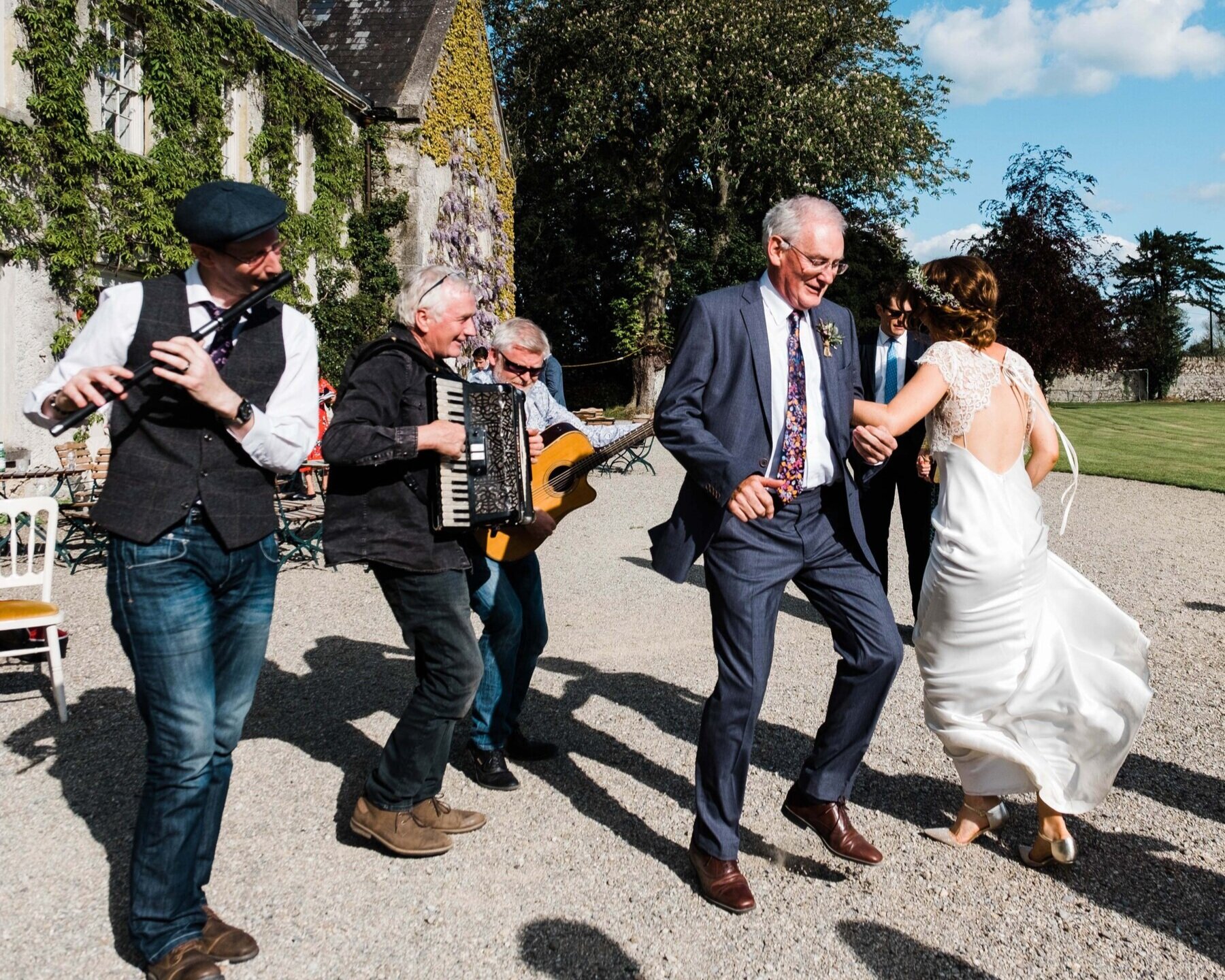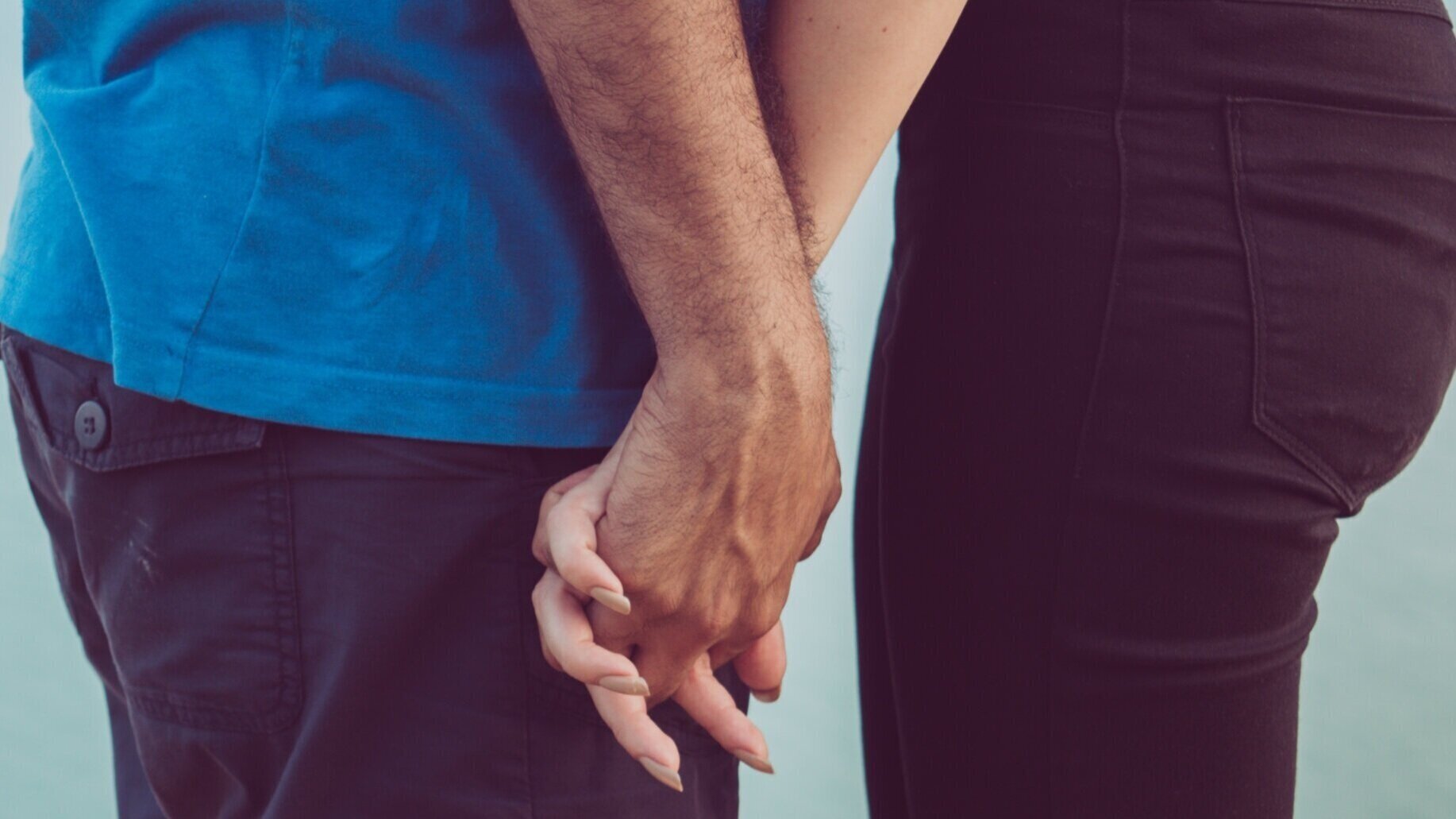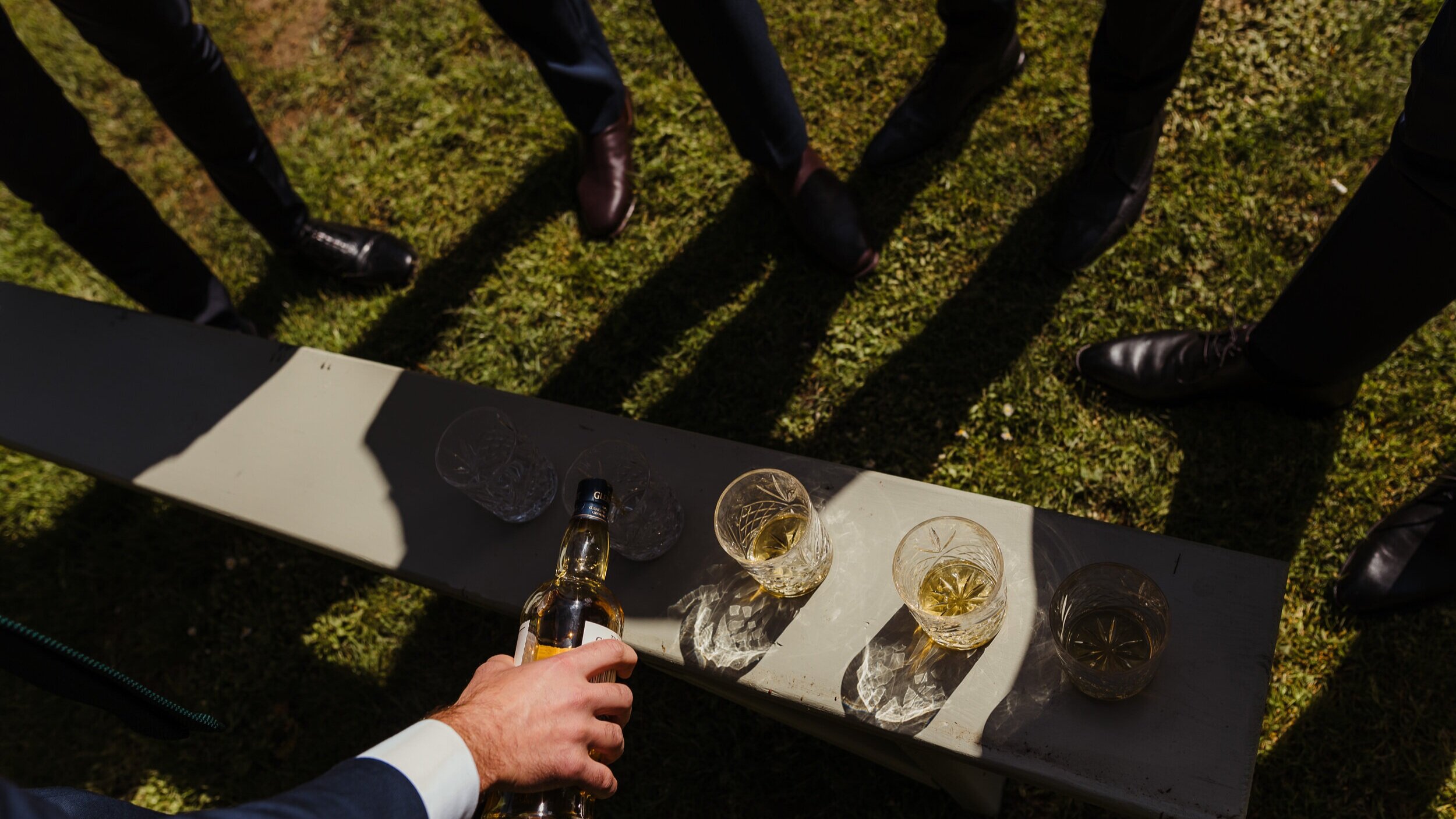Weird, Wacky and Wonderful Irish Wedding Traditions
Traditional Irish dancing and music
Photo Credit: Dena Shearer
Does the luck of the Irish extend to weddings? We decided to have a look at some of the unusual and interesting Irish traditions and superstitions that relate to the big day.
While you may like to adopt some of these, we also suggest you take several with a large pinch of salt!
Tying the Knot
Did you ever wonder where the phrase tying the knot came from? Before Christianity was established in Ireland (in around 432 AD), couples would practice a Celtic commitment ceremony known as hand-fasting. An ancient Pagan tradition, the ritual involved tying the hands of the betrothed together well before their wedding day – a similar premise to an engagement. The couple cross wrists and hold hands, ribbon or cord is then wrapped around the wrists in figure eight to represent infinity – hence ‘tying the knot’.
A Claddagh Ring is a traditional Irish engagement or wedding band
The Claddagh Ring
Thought to have originated in the small fishing village of Claddagh in Galway in the 17th century, the Claddagh ring is a traditional Irish wedding band. The ring comprises two hands holding a crowned heart; the heart, hands and crown are said to represent Love, Loyalty and Friendship. Customarily the ring was handed down from mother to daughter. While many couples, even those not of Irish descent, are choosing the Claddagh symbol for their engagement and wedding rings, one word of caution: it is said to be very bad luck for a person to purchase a Claddagh ring for themselves. It must be given or received as a gift, maybe drop some cheeky hints to your partner to be!
Another important point to note is how you wear your Claddagh ring - if you are engaged or married the tips of the crown should be facing out, whereas if you are not romantically involved the tips should face the wrist, indicating your availability.
In Ireland the Child of Prague statue is thought to influence the weather for the wedding day
Putting the weather in the hands of a statue
All Irish will tell you the importance of the Child of Prague statue, the extravagantly dressed statue of the baby Jesus that holds the fate of the weather in his miniature plaster-cast hands. While it is common knowledge one must place the statue in the garden the night before the wedding to ensure good weather, there is widespread disagreement on the exact details.
According to wedding experts One Fab Day, these are the main theories - we’ll leave it to you to take the pick from the following for your special day!
The Child of Prague statue:
Should be placed in the garden under a bush
Should be placed in the garden facing the house
Should be placed in the garden facing away from the house
Should be buried in the garden up to his neck
Should be buried upside down in the garden
Should be placed outside the door of the church where the couple are getting married
Should be placed in the hallway of the bride's house with a coin or some paper money left underneath by way of an offering
His head should be broken at the neck, and it's fine to force it off with your hands or by smashing it off a hard object
His head should be broken at the neck, but it must not be broken by human hands - it should break naturally when left outside overnight, either by the sharp drop in temperature, or by the wind blowing it over
His head should be broken at the neck, but it must be glued back on
The statue must be a gift in order to work
Don’t worry too much as here at Cloughjordan House we have a Child of Prague statue outside our marquee, ready to work his meteorological magic!
Wedding Cake
A lovely wedding tradition is saving a whisky soaked tier of the wedding cake for the christening of the couple’s first child. The bride would also carry a lace handkerchief on her wedding day to be later made into a baby’s bonnet for the same occasion.
Moreover, when it comes to the wedding cake, be wary of your mother in law sneaking a piece or two into her handbag. In Irish tradition, as the bride walked through the doorway to her new home for the first time, her mother in law would break a piece of the wedding her cake over her head. This was to ensure that both women would always be friends – again – if only it was this easy!
Whiskey has been said to warn off the evil spirits for a wedding… sláinte!
Photo Credit: Sosac Photography
Watch out for the Faeries
It seems back in the day, there was a small army of evil spirits or faeries ready to swoop in and ruin the wedding at each turn! Thankfully, there were also many strategies to avoid this…
During the ceremony, guests were supplied small bells to ring at certain points, intended to ward off evil spirits. Meanwhile, the original purpose of bridesmaids was to wear similar dresses to the bride, to confuse and outsmart the evil spirits (and the bride’s exes!).
Whiskey played an important role, but it a slightly different manner to today; before guests and the couple arrived at the wedding reception, whiskey would be sprinkled on the grounds to ward off evil spirits and to wish the bride and groom well.
Prior to the wedding meal, the bride and groom would eat a small portion of salted porridge, to protect them from the ‘evil eye’. Next comes the first dance, in which case the bride would not, under any circumstances, lift both feet off the floor. Of course, if she did, the faeries would swoop in and carry her away - because as you may have figured out, they had a special liking for brides.
Finally, after an exhausting day of warding off the evil spirits, when retiring for the night, the bride and groom must always, always leave at the same time, and together; if the bride was left alone the faeries would be sure to come and take her away.
The origins of a honeymoon certainly isn’t what you might expect!
Honeymoon
Did you know that the origin of honeymoon was in fact related to mead, a honey fermented drink that was used to toast the couple? As tradition has it, the couple were given enough mead to toast each other each night for one full-moon after the wedding – hence honeymoon.
Of course we mustn’t forget that by drinking the mead it also protected the couple from those pesky (and determined) faeries who were still waiting in the wings to spirit the bride away!
We hope you learnt something from the above, if you want to read even more about Irish wedding traditions, The Independent has a great article about ‘what’s in, what’s out and what’s out there’ when it comes to modern Irish nuptials.







